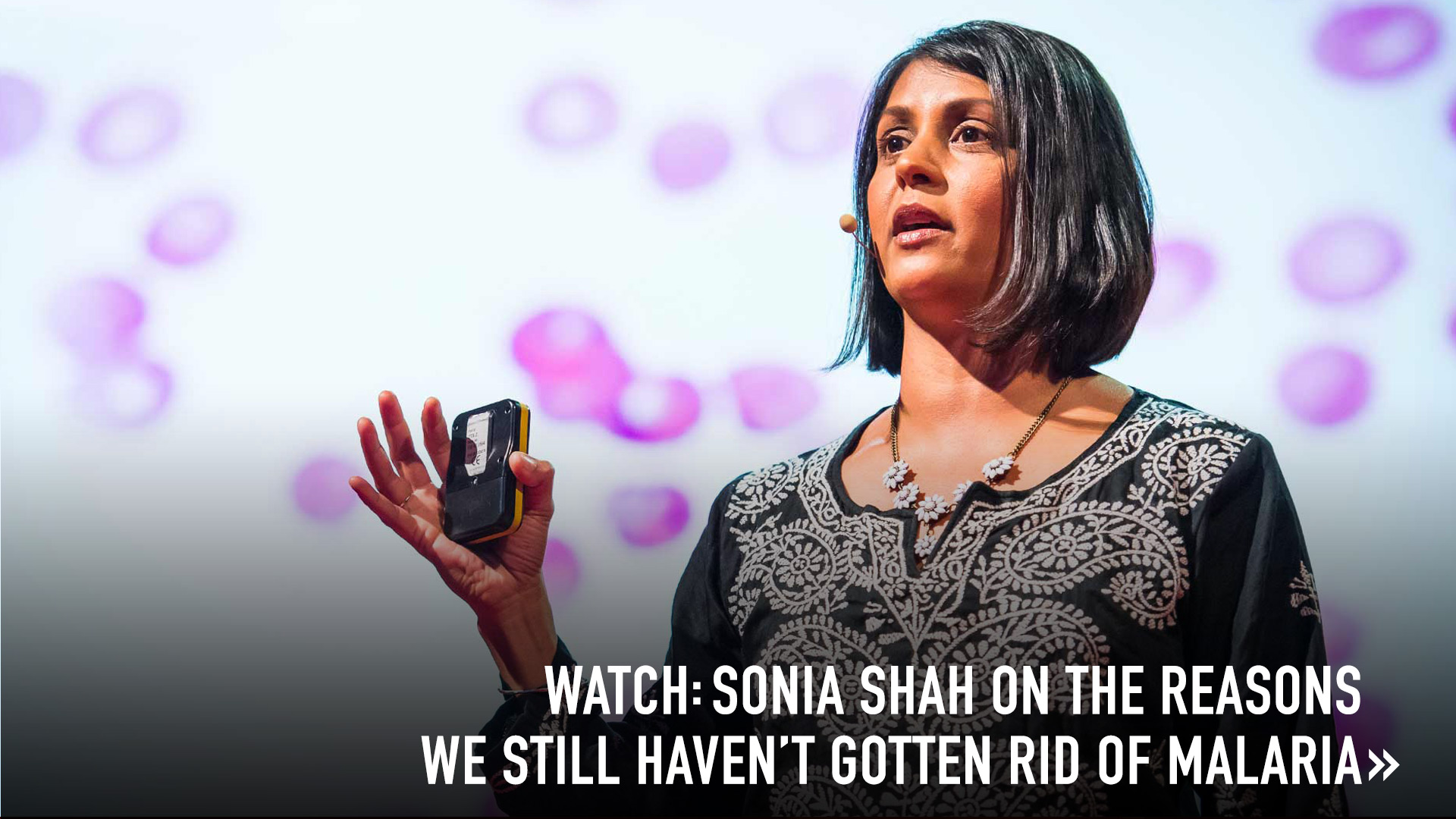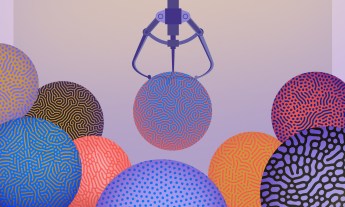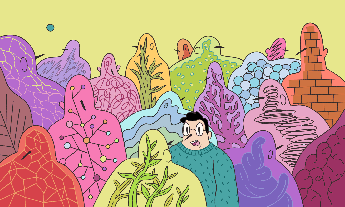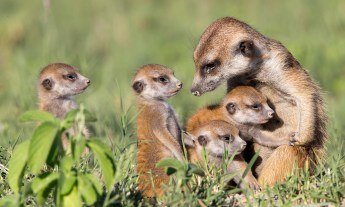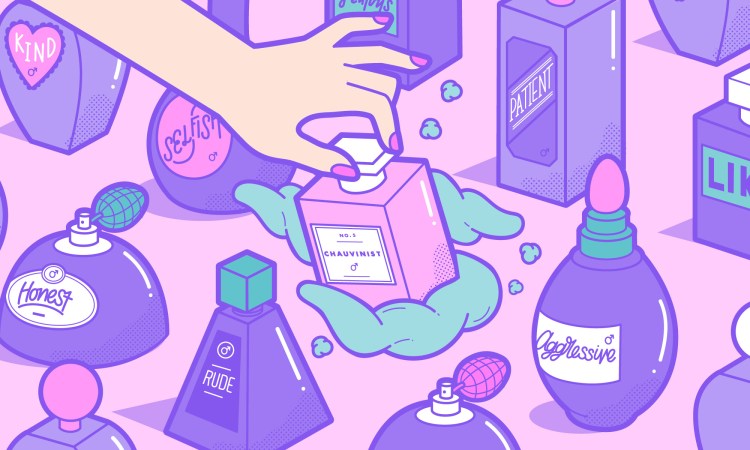
Science writer Sonia Shah explains why it’s really not your fault you’re attracted to that terrible person.
While the precise architecture of romance remains decidedly mysterious, evolutionary biology suggests a few general rules. One is that people should be attracted to mates who will be good coparents and help them produce viable children. That’s just simple logic: people attracted to bad coparents tend not to have many kids, or not many who survive, diluting their numbers over time.
The contradiction is that in the case of humans, the attractiveness of mates doesn’t seem to correlate with their likelihood of being good coparents. Cross-cultural studies have shown that women find male facial features that are controlled and made more pronounced by the hormone testosterone — broad chins, deep-set eyes and thin lips — attractive. In general, the more testosterone a male has, the more likely he is to be attractive to women. And yet, at the same time, the more testosterone a male has, the less likely it is that he will be a good coparent. Compared to low-testosterone males, high-testosterone males are more likely to engage in antisocial behavior and are less likely to get married. If they do marry, they are more likely to get divorced, have extramarital affairs, and act violently toward their spouses. A high level of testosterone, in that case, should make males less attractive to females. But it’s just the opposite.
Broad chins and deep-set eyes, in other words, are like the peacock’s tail. Long, heavy and conspicuously showy, the peacock’s tail is a clear hindrance to male birds’ survival. Female peahens looking for good mates should prefer male birds with less showy tails. But numerous studies have shown that, like human females who prefer high-testosterone males, peahens prefer male birds with the longest, fanciest tails.
Despite the fact that their dazzling, elaborate tails are a hindrance to peacocks’ survival, peahens continue to find them attractive.
The reason why, evolutionary biologists say, is that a peacock’s long, fancy tail — precisely because it is a hindrance — signals to the peahen that he is a strong, able mate. It’s advertising. And one thing it advertises is the strength of the peacock’s defenses against pathogens. Peacocks with the longest, fanciest tails, scientists have found, have stronger immune systems and are less pathogen-infested than peacocks with shorter tails. And choosing them over peacocks with short, dull tails does help peahens enjoy greater reproductive success. Peahens who mate with long-tailed peacocks have bigger babies at birth who are more likely to survive in the wild, compared to peahens who mate with shorter-tailed peacocks. And so despite the fact that their dazzling, elaborate tails are a hindrance to peacocks’ survival, peahens continue to find them attractive.
The male features in humans that indicate high-testosterone levels may perform a similar function. They, too, advertise the strength of a male’s immune system: high levels of the hormone correlate with stronger immune defenses. It may be that females find high-testosterone facial features attractive for the same reasons that peahens find long, showy tails attractive: they demonstrate the pathogen-fighting prowess of their mates.
In a study of 29 different cultures, psychologists found that those that placed more emphasis on the physical attractiveness of potential mates were indeed those with higher burdens of pathogens. Another study found that females who express greater awareness of contagion prefer males with more masculine features. There’s also experimental evidence to support the link between ideas about male beauty and contagion. Scientists experimentally manipulated subjects’ fear of contagion (for example, by showing them pictures of white fabric stained with blood) and then asked them to judge male features. They found that women whose awareness of pathogens had been heightened preferred images of males with more masculine features, compared to women who were not thus provoked.
Numerous studies have shown that people, like other animals, can sense the composition of others’ pathogen-recognition genes by scent.
Another curious facet of attractiveness and mate choice that may have originated as a strategy to survive ancient epidemics has to do with pathogen-recognizing HLA genes. Choosing a mate with pathogen-recognition genes different from your own improves the chances that your children will be able to survive a broad range of pathogens. Indeed, couples whose pathogen-recognition genes differ enjoy greater reproductive success than couples whose pathogen-recognition genes are more similar. (They suffer fewer spontaneous abortions, and their children are more closely spaced in age, suggesting that they experience few miscarriages.)
Of course, the composition of other people’s pathogen-recognition genes can influence our choices about mates only if we can somehow distinguish between people with similar pathogen-recognition genes and those with exotic pathogen-recognition genes. Although most people are unaware of it, it turns out that we can. Numerous studies have shown that people, like other animals, can sense the composition of others’ pathogen-recognition genes by scent. (Precisely how pathogen-recognition genes influence body odor is unclear. It may revolve around how the proteins coded by the genes bind to cells or affect the bacterial fauna in the body that create odors.) And people have preferences based on those odors. In one study, subjects whose pathogen-recognition genes had been typed were asked to wear cotton T-shirts for two nights in a row (while refraining from using perfumes in soaps or other products and eating foods that produced strong odors). The T-shirts were then stuffed into unlabeled jars, which were presented to the subjects to sniff. Each preferred the scent of those T-shirts worn by people whose pathogen-recognition genes differed the most from their own.
That’s not to say we choose mates based solely, or even in part, on their body odor, of course. But it’s quite possible that we once had to, in our epidemic-plagued past. To this day, we can sniff out the difference and feel a twinge of residual desire based on it.
For better or worse, we’re “host-microbe ecosystems.” Microbes shape us from without and also from within.
Microbes have exerted a similarly powerful influence on us via their perch from inside our bodies. Scientists are just starting to unravel the mysteries of the microbes that live in and on us, collectively known as the microbiome. So far, they’ve found that they’re often invisible puppet masters, too, and that critical processes such as that of brain development in mammals, sex in insects, and immunity in mice are triggered solely by the presence of certain microbes. The microbes that live in human guts influence our risk of developing obesity, depression and anxiety. They may play a role in controlling our behavior as well. Experimentally ridding mice of their microbes altered their behavior in suggestive ways, reducing both their anxiety responses and their ability to perform tasks requiring memory; exposing one mouse to the microbes of another led it to behave in ways that mimic the other.
All of which is to say that our vaunted sense of individuality is an illusion. Animals like us, as the evolutionary biologist Nicole King has said, have never been single organisms. For better or worse, we’re “host-microbe ecosystems.” Microbes shape us from without and also from within.
Pathogens and pandemics are not solely the products of modern life. They’re part of our biological heritage. The predicament we find ourselves in today, on the threshold of a new pandemic, is hardly exceptional. It’s of a piece with hundreds of millions of years of evolution.
In many ways, we remain as diminished by pathogens today as we were eons ago. Globally, we’ve conquered barely more than a handful. New pathogens encroach upon us by the hundreds, threatening a pandemic. Meanwhile, old ones continue to exact their pounds of flesh: nearly half of all deaths in people under the age of 45 are due to infectious disease.
And yet at the same time, our prospects have never been better. Consider the fact that of the three existential challenges faced by all species, pathogens are just one. Our conquest over the other two — predators and Earth’s often hostile climate — has been nearly complete. We’ve been incrementally transforming hostile climes to suit our needs and comforts since our ancestors tamed fire one million years ago, banishing the night and the cold the way our central heating systems and hermetically sealed glass windows do today. Our battle with predators was settled when we walked out of Africa 100,000 years ago and into the world’s continents, rapidly driving every other large mammal — and the predators that hunted them — into extinction. We rid our habitats of the American lions, the mastodon, the mammoths, the saber-toothed cats and the other hominids such as Neanderthals that might have preyed upon us. Our sole predators left now are other humans.
I don’t mean to argue that the way we subdued the environment and other species was without negative ramifications. But it shows the extent of human capacities when we can apply our intelligence and tool-making skills to the task. Because both of these existential challenges have been obvious to us for thousands of years — even our earliest ancestors could recognize the destructive power of storms and the danger that predators posed to them — we’ve been able to wield our own agency to overcome them.
In contrast, for most of our history, we’ve been unaware of pathogens’ role in our lives. We developed the technology to detect microbes less than two centuries ago. We are just beginning to grasp the extent of their secret world today. It may have seemed, with the development of antibiotics and other wonder drugs in the mid-twentieth century, that we’d conquered our old foes. But seen in a larger historical context, we look more like climbers on top of a foothill, mistakenly thinking we’ve reached the summit. The project of applying our intelligence and tool-making skills to the challenge pathogens pose has only just begun.

